Asian Elephants are Asian species of elephant that are smaller than the African elephant, but they are among the largest living land animal. These elephants live in Asia, while African elephants live in Africa. These elephants can be found in India, Sri Lanka, Thailand, and other parts of Southeast Asia. The elephants are threatened by human-elephant conflict.
- Status: Endangered
- Known as: Asian Elephant, Asiatic Elephant.
- Estimated numbers left in the wild: Approximately 40,000 to 50,000 individuals.
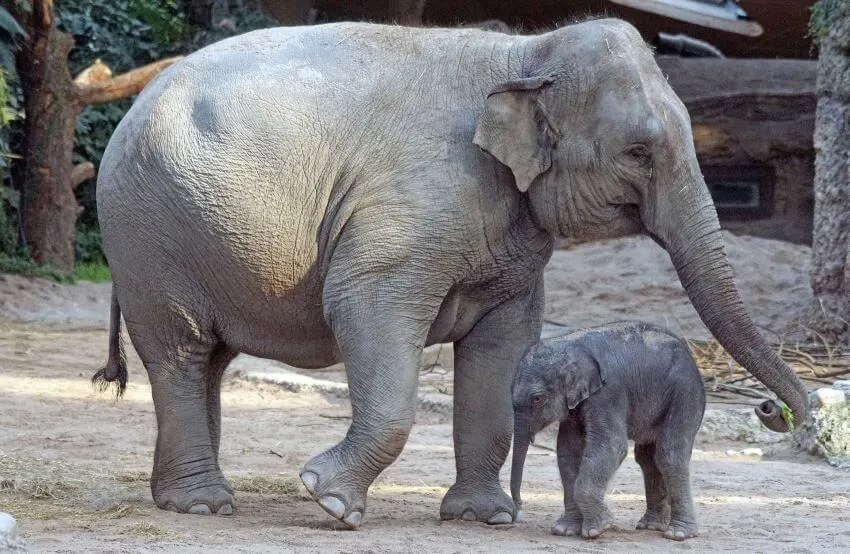
Asian Elephants are endangered because they have been hunted for their ivory tusks, and their natural habitat is shrinking due to deforestation.
Their natural habitat is also shrinking due to deforestation, which means that there is less and less space for them to live in. This puts them at risk of becoming extinct.
Description
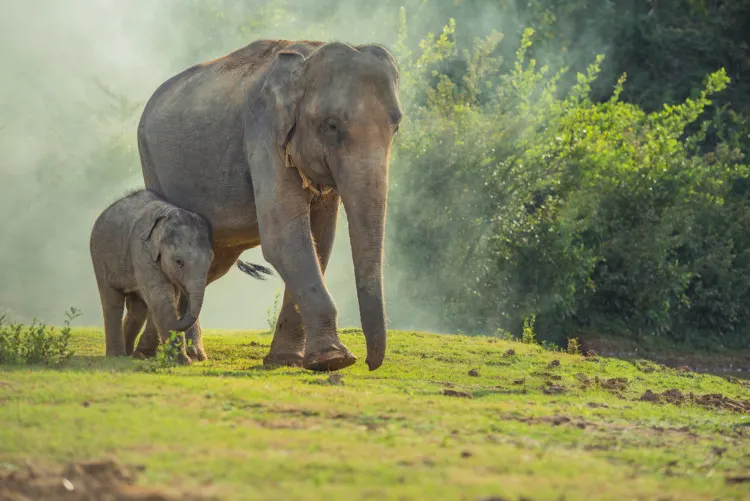
The elephant species are endangered because they are hunted for their ivory tusks and their natural habitat is being destroyed. The elephant is a type of elephant that is smaller than the African elephant.
These elephants reside in Asia, while African elephants can be found in Africa. They are recognized as two subspecies: Asian Elephas Maximus, the Indian Elephant, and Asian Elephas indicus, the Sri Lankan Elephant.
Etymology
The word “elephant” is derived from Greek κελί πίπς—which means “ivory.” On the outskirts of Indonesian cities such as Yogyakarta people still make a living by hunting elephants for their ivory tusks.
This is because people mistakenly believe elephant ivory is a status symbol or a sign of wealth. Elephants are also poached for meat because some Asians believe that eating elephant meat is a sign of masculinity.
Anatomy and Appearance
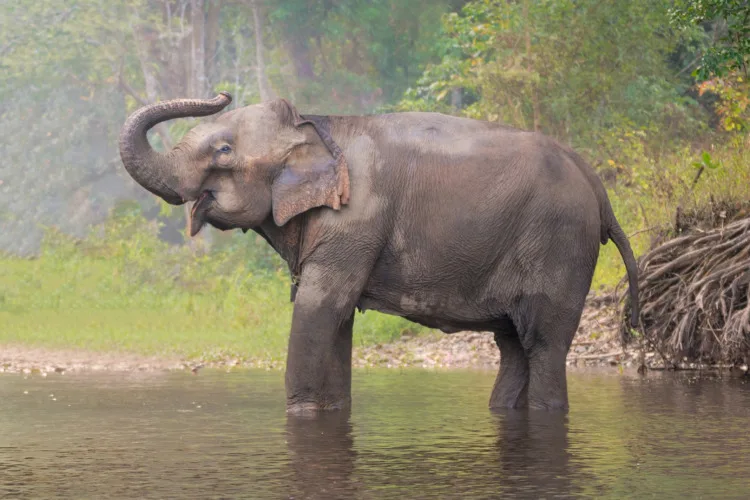
Smaller than the African elephant, this species of an elephant weighs from 2 to 5 tonnes and stands between 2 and 3 meters tall. They can live for up to six decades in the wild, protected from most predators except man by their bulk, thick hide, and formidable tusks.
Their sensitive yet muscular trunks give them an excellent tool for manipulating their environment, while their large ears help keep them cool in tropical heat despite their size.
Brilliant and social herd animals, the elephants use their trunks to gather food to spray water on themselves in the heat to social interaction.
Fascinatingly, elephants use subsonic sounds too low for the unaided human ear to hear – to communicate over long distances, allowing herd members to stay in contact with each other while up to 5 kilometers apart.
Their size and appearance are smaller than African elephants, and adult males can grow to be 10 feet tall, while female Asian elephants can grow to be 7 feet tall.
Asian males weigh 2500-5000 pounds, while females weigh about 2000-4000 pounds. Elephants have small ears, rough skin with wrinkles, and each foot has five toes. Asian species of elephant tusks are smaller and downward curving, unlike African elephants tusks are longer, bigger, and point upward.
See Related: Difference Between African and Asian Elephants: A Comprehensive Comparison
Location
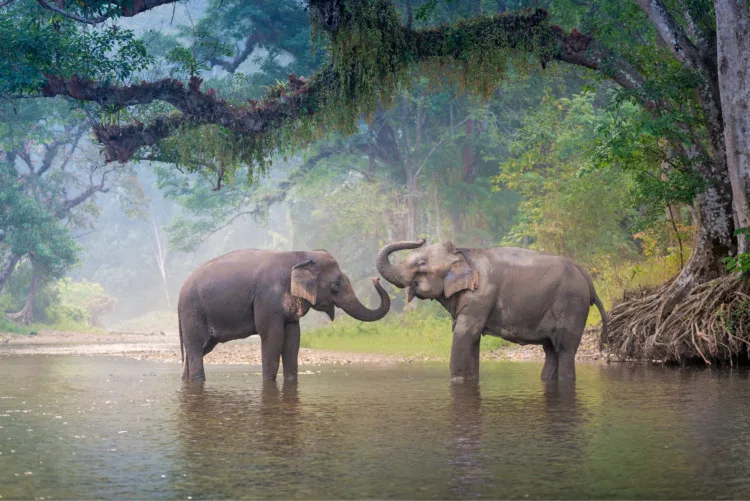
The Asian elephants and its subspecies are found in Sri Lanka, Bangladesh, India, Nepal, Bhutan, Myanmar, Sumatra, Vietnam, Cambodia, Laos, Borneo, China, and the Malay Peninsula.
These Elephant species s are fairly versatile in their choice of habitat, being found from sea level to 3,000 meters up the slopes of the Himalayas.
Grassland, scrubland, secondary forests, and various primary forests – a dry thorn, dry and moist deciduous, semi-evergreen, and tropical evergreen – are all places where these wild elephants can be found.
See Related: Difference Between African and Asian Elephants: A Comprehensive Comparison
Population
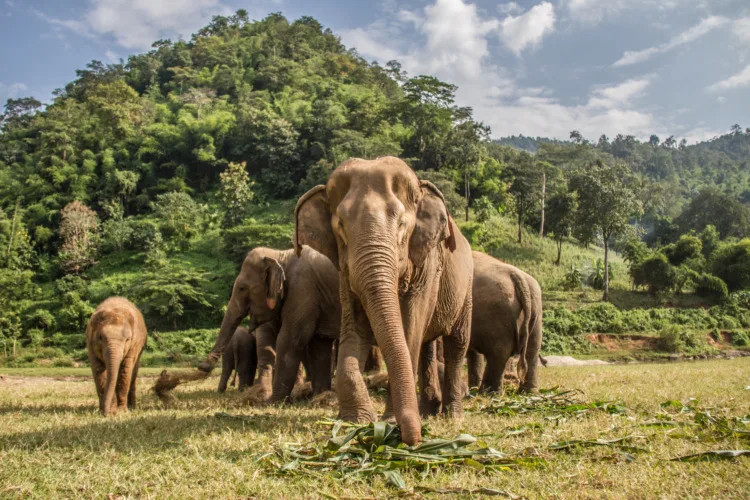
In India, it is estimated that only about 27,300 of their species remain in the wild, making them critically endangered.
Sri Lanka has the largest population of elephants with approximately 7000-7500idespread poaching for ivory tusks, loss of habitat, and other human-caused problems have led to elephants being listed as an endangered species.
In India, it is estimated that only about 27,300 elephants remain in the wild, making them critically endangered.
Asian Elephant Habitat
Asian elephants live in warm climates and prefer to live in forests or grasslands. Elephants need a lot of space, and their natural habitat is shrinking due to deforestation.
The species are elephant species that are smaller than African elephant species. These animals live in Asia, while African elephants live in Africa.
See Related: These Are 13 of the Longest Living Animals on Earth
Asian Elephant Diet and Nutrition
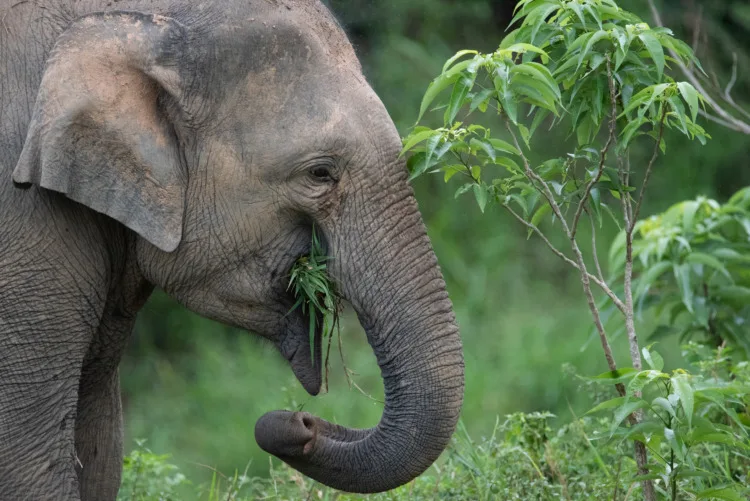
It is a species that is known as herbivores and eats various types of grasses, leaves, roots, bark, fruit, and sap. Their diet is very low in nutrients. They also eat hay to provide additional fiber to their diet.
Elephants are strictly herbivorous, using their trunks and tusks to gather foliage, tree bark, and other edible plant products.
The tusks are also used in combat between rival bulls and as a defensive weapon against predators.
The elephant is far easier to domesticate than its African cousin. Therefore been used for heavy tasks such as moving logs or large stones, as an armored war beast, and countless other tasks over the past several thousand years.
See Related: Do Lions Eat Elephants? Here’s What to Know
Asian Elephant Mating Habits
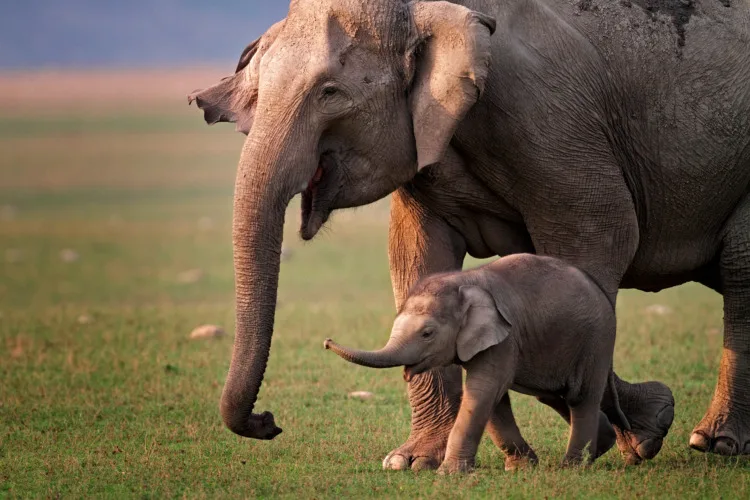
These elephants mate year-round, but the peak breeding season is from November to May. They are polygynous, meaning that a male can mate with multiple females.
A female Asian elephant will usually have a single calf at a time. They are not sexually exclusive, and a male may mate with multiple females within a single breeding season.
The wild Asian elephants gestation is nearly two years long, the longest of any land mammal. The Asian Elephant’s gestation period varies from 14 to 18 months.
Elephants have a very slow birth rate as female offspring or calves weigh 300kg at birth and the calves are not fully weaned until they are at least 2½ years old.
Elephants’ birth rate is also very low partly because elephant mothers only have a baby every 4 to 6 years when she has a calf, and elephants have a long gestation period of nearly two years.
Asian Elephant behavior and lifestyle
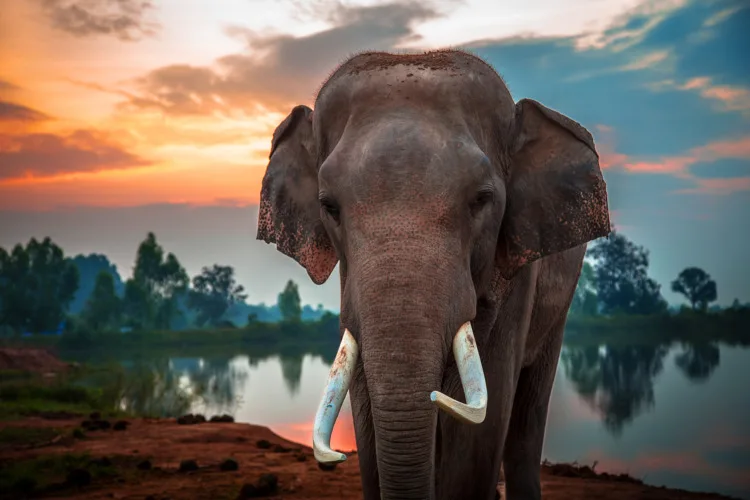
They live in groups of related females with their young called a herd. Elephant herds are led by an older female known as the matriarch. They are slow-moving animals that usually only walk a few miles daily.
They are herbivores that eat a variety of plants. Elephants have been known to eat crops when they are available. They also use their trunk to grab things and their tusks to dig for food.
Elephants communicate with each other through various vocalizations and body movements. These elephants are one of the largest Asian animals. Elephants can be up to 3 meters tall and weigh more than 5,000 pounds.
See Related: How Do Animals Adapt To Their Environment?
Asian Elephant vs African Elephant
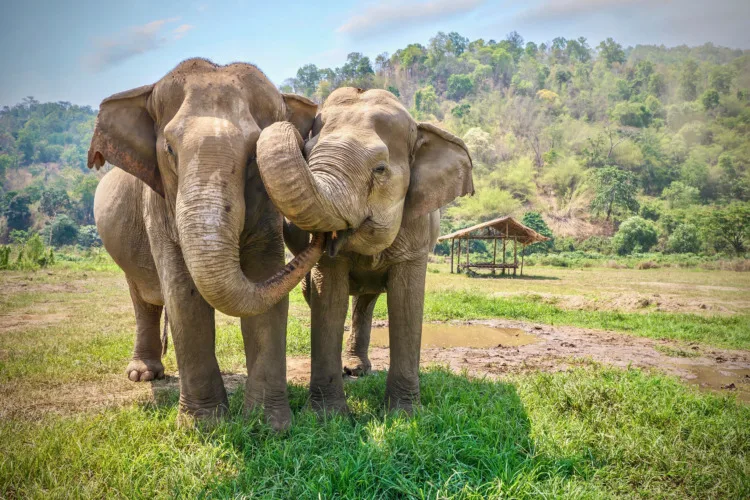
Asian Elephants and African elephants are two different types of elephants. These species are smaller than African elephants, and they live in Asia while African elephants live in Africa. Asian species elephants have been hunted for their ivory tusks, and their natural habitat is shrinking due to deforestation.
They are the elephant that is the smallest of the world’s elephants, and it is found in scattered populations throughout Southeast Asia. Elephants have been hunted for their ivory tusks, and their natural habitat is shrinking due to deforestation.
Asian species elephants are different from African elephants in many ways.
They are smaller than African elephants, elephant visible tusks curve inwards while African elephant tusks curve outwards, Asian ones have smaller ears than African elephants, the Asians have a rounder back than Asian species of elephant, and Asian species of elephnat have less hair on their bodies than African elephants.
See Related: Animals that Start with X
Asian Elephant Facts
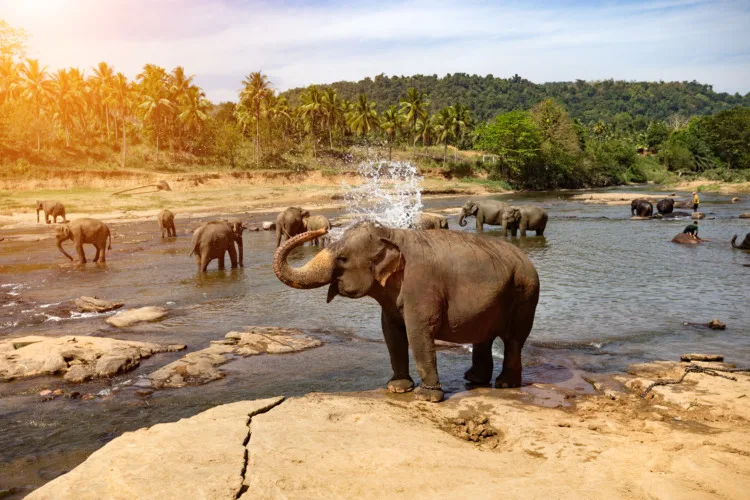
Here are the interesting facts that you need to know about Asian Elephants
- These elephants are the largest land animals in Asia.
- They have two bumps on their forehead that are called “tusks.”
- Tusks are used for fighting, digging for food, and moving heavy objects.
- They are endangered because they have been hunted for their ivory tusks, and their natural habitat is shrinking due to deforestation.
- They are an elephant species that are smaller than the African elephant.
- They are an important part of Asian culture and play a role in many religious ceremonies.
- These wild elephants are very intelligent animals and can learn how to do things such as paint, use tools, and count.
- They are being trained to help people who have disabilities.
- These elephants are very important to the environment because they help disperse seeds and create new habitats.
- These species are listed as endangered by the International Union for Conservation of Nature (IUCN).
- There are about 40,000 of ist species in the world.
- They have been killed for their ivory tusks due to the past ivory hunting.
- The elephants have a rounded back and a domed head with a pointed forehead. Their trunk has two finger-like projections at the tip.
- They have a long, coarse tail that is almost as long as their bodies and ends in a downward curve.
See Related: Difference Between African and Asian Elephants: A Comprehensive Comparison
Conservation Status
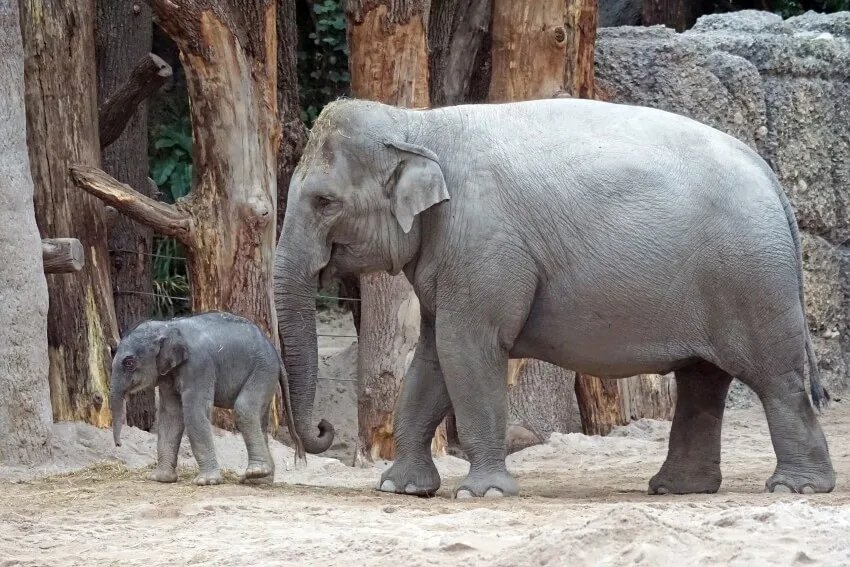
Asian elephant conservation status is a major concern today. They are endangered because they have been hunted for their ivory tusks, and their natural habitat is shrinking due to deforestation.
If the current trend continues, elephants could become extinct in the wild within the next few decades.
Threats
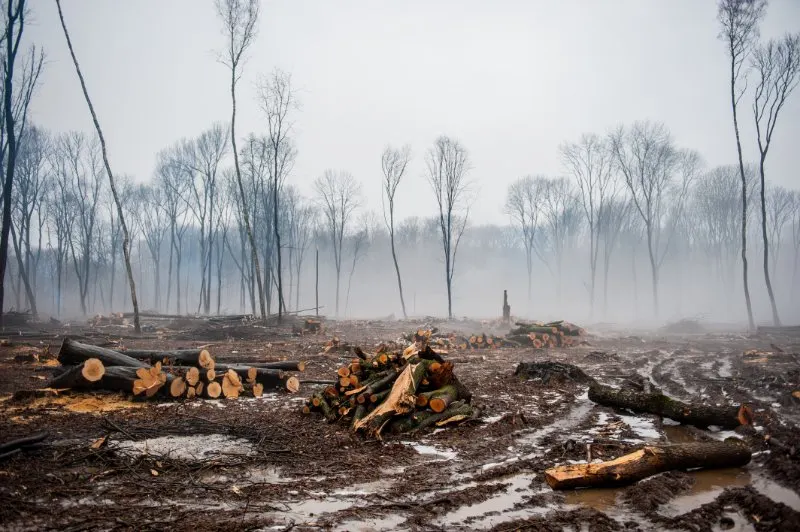
Human activity is the principal threat to the elephant’s survival in the wild. Much of the danger comes from a combination of habitat loss and habitat fragmentation. The African elephant’s natural habitat is threatened by deforestation, and they have been hunted for their ivory tusks.
Close to a fifth of humanity lives adjacent to the wild Asian elephant habitat, making it particularly vulnerable to further losses.
Seasonal elephant migrations often bring humans and elephants into violent conflict. Furthermore, many elephants are still captured from the wild for use as work animals. Thus avoiding young elephants needing to be cared for with no immediate financial return.
This process reduces the wild population and often results in unnecessary elephant deaths. Finally, elephants are hunted for their tusks, hide (used for shoes in Thailand), and their bones (used medicinally in China).
Poaching and Ivory Trade
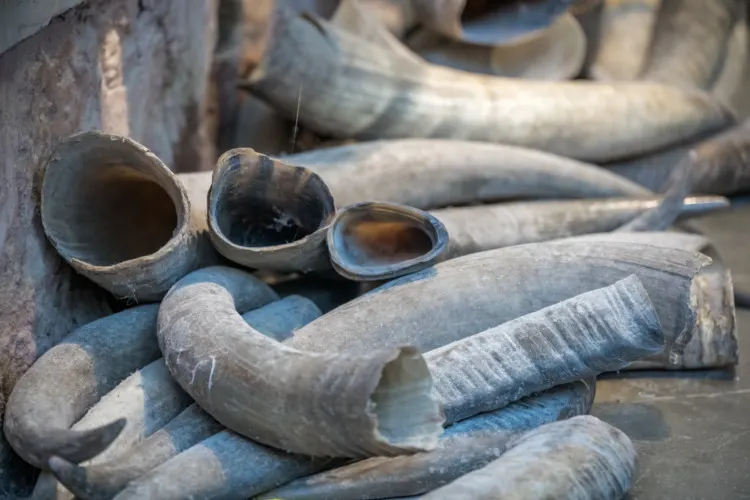
Asian Elephant population declined by poaching and killing from alarming rates of elephant hunting from the 1990s to the present day. Elephants have a role in Asian culture and are a major part of Asian history.
Elephants are parts such as ivory tusks and meat used for medicinal purposes in Asia, which caused the poaching of elephants even more rapidly. Elephant populations have decreased drastically over the last few decades because of poaching, with about 75% of the global population lost in just three generations.
An illegal ivory trade continues to drive widespread poaching and the loss of thousands of elephants each year.
While much attention over the last decade has focused on Asian ivory markets and heavyweights such as China and Thailand, researchers warn criminals now see Africa as “the weakest link” in an emerging interconnected world market system fueling the extinction crisis facing wild elephants across Asia and Africa.
Habitat Loss
Asian elephants live in Asian habitats due to deforestation and expanding human settlements at a rate of 4 acres per hour. Elephants only have half the habitat they used to have 50 years ago, which means that they now have to compete with other Asian wildlife for food.
Human wildlife conflict
Human wildlife conflict is a situation where humans and wild animals interact with each other in a negative way.
This can happen when people are living or working close to animal habitats, or when people are trying to protect their property or livestock from wild animals. Wild animals can be dangerous, and they can also damage crops or property.
Conservation efforts
Conservation efforts are underway to protect and preserve the wild populations of the elephant species. This magnificent animal is a crucial flagship species used to rally support for the conservation of other species and habitats in the region.
Captive Breeding
Captive breeding of work animals is also encouraged to reduce and eventually eliminate the destructive capture of wild animals to replenish domestic stocks.
Elephant captive breeding is a type of conservation initiative that seeks to save elephants from extinction by acquiring elephants from the wild and breeding them in captivity. There is no guarantee that elephant captive breeding will be successful, but it is a way of trying to save elephants from the risk of extinction.
Educational Program
The program is designed to provide information about elephants to people living where the elephants are found. The program also focuses on assisting people living where elephants are poached.
Elephant Conservation Organizations
International Elephant Foundation

International Elephant Foundation is an American organization founded by individuals and institutions to protect elephants in Africa and Asia.
The International Elephant Foundation is working to protect elephants by providing educational programs for both adults and children in Asian countries. The goal is to promote the value of elephants in order to increase their populations.
Widespread elephant poaching for ivory tusks, loss of habitat, and other human-caused problems have led to elephants being listed as an endangered species.
Wildlife Conservation Society

Wildlife Conservation Society was formed in 1895 to protect 25 percent of the world’s biodiversity by promoting the importance of protecting wildlife and their habitats. WCS has five zoos in New York.
The goal of the Wildlife Conservation Society is to take a stand against the ecological crisis and to ensure that our natural world is sustained. They have been working on building a wildlife movement, connecting people worldwide, and adapting conservation strategies to achieve their goals.
Elephant Action League

The Elephant Action League is an international non-profit organization that aims to protect elephants and their habitats.
The Elephant Action League focuses on three main areas: law enforcement, advocacy, and fundraising. Some of the work that the Elephant Action League does includes working with governments to stop the trafficking of ivory and elephant skin, conducting research on the illegal ivory trade, and providing education on the importance of elephants. The organization also works with other conservation partners.
World Wildlife Fund

One of the organizations in elephant conservation is the World Wildlife Fund. They are working with Asian governments, local communities, and other partners in Asian countries to protect elephants’ habitats. WWF has also provided elephant loans to Asian countries for programs that benefit animals. For example, they have loaned elephant funds in India, Thailand, and Vietnam.
See Related: 13 Animals That Have Gone Extinct Due to Deforestation
Final Thoughts
Asian elephants are endangered because they have been hunted for their ivory tusks, and their natural habitat is shrinking due to deforestation. Conservation efforts are underway to protect and preserve the wild populations of elephants.
This magnificent animal is a crucial flagship species used to rally support for the conservation of other species and habitats in the region.
Captive breeding also offers hope as it reduces or eliminates the destructive capture of wild animals into domestic stocks, which can be seen with Elephant captive breeding initiatives that seek to save them from extinction by acquiring Elephants from the wilds by capturing them and then breeding them domestically in 1995, Asian Elephant conservation is a global effort with many organizations working together to protect the species.
Additionally, organizations such as the World Wildlife Fund work with Asian governments, local communities and the International Elephant Foundation.
These organizations work on different levels, from providing education programs to law enforcement and fundraising. The goal is to stop the decline of elephants and keep them from becoming extinct.
FAQ
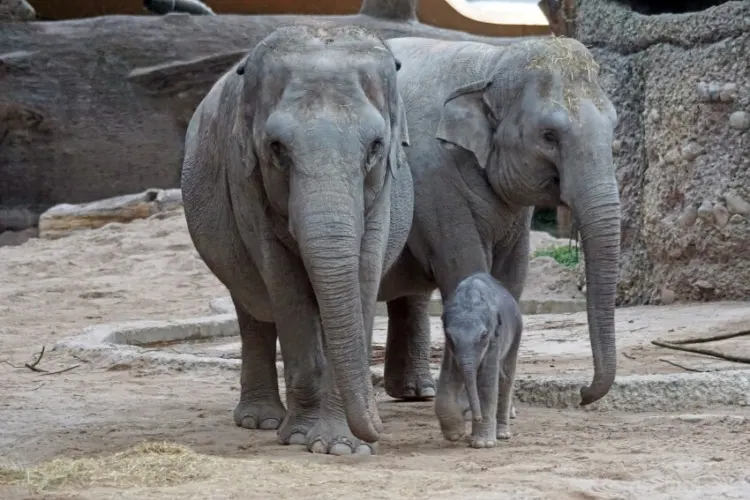
What is an Asian Elephant?
Asian elephants are elephant species in Asia. They are threatened due to hunting and habitat loss. The Asian Elephant is smaller than the African Elephant.
When do Asian Elephants become endangered?
Asian elephants became endangered because these species were hunted for ivory tusks, and Elephant’s habitat became smaller due to deforestation.
Why are Asian Elephants endangered?
Asian elephants are endangered because their natural habitat is shrinking due to deforestation. Elephants are killed for their ivory tusks, which are then sold on the black market. The illegal wildlife trade is a major threat to elephants and other animals around the world.
They are also killed for their meat, which is considered a delicacy in some parts of Asia. They are also killed by train accidents and electrocution from power lines.
How many Asian Elephants remain in the world today?
The Elephant estimates 98% of its population has died out, with less than 5100 animals remaining in the wild according to the IUCN Red List of Threatened Species.
Only around 3900 survive in the wild, with another 500 or so animals living captive at various locations around Asia according to WWF’s 2016 estimate.
This number does not include slightly more than 100 animals known only to exist in zoos and other collections outside of Asia including elephants are the only elephant species and they live in 11 Asian countries.
Where do Asian Elephants live?
Elephants live primarily in India, Sri Lanka, Myanmar, Sumatra, and Borneo or the borneo pygmy elephants. elephants eat both plants and small animals, but they mainly eat grasses.
Elephants live in three Asian regions: the South Asia region (India), the Southeast Asian region (Indonesia), and the Lesser Sunda Islands of Maritime Southeast Asia (Sri Lanka).
What is Asian Elephant conservation?
Elephant conservation is the preservation of elephants that are endangered.
Elephant populations have declined at alarming rates because these Elephants are hunted for their ivory tusks and Asian landscapes, where Elephants live, are being destroyed by deforestation.
For example, in Myanmar, huge areas of forest land have been cleared to grow crops for export cash crops such as sugar cane or tea bushes.
The clearing affects many elephant lives since they need the forest to survive. It is difficult for these Elephants to make a living now because there is less food available in Asian Landscapes due to deforestation, especially trees that provide foods like fruit and bamboo shoots that elephants eat.
How does Asian Elephant conservation work?
Elephant conservation is most commonly happening in Asian countries with elephants, where it may also be called elephant management.
These elephants are harvested for their trade in both parts of their body, the body and the hair for things like decorations or religious ceremonies. They are hunted to supply meat or they can’t consume enough food due to rapid deforestation within their natural habitat which causes them to live longer because they have less food sources.
There is a variety of conservation methods used in Asian countries where elephants can vary depending on how developed an economy is with regard to conservation goals.
How is Asian Elephant conservation funded?
Asian species of elephant conservation is funded by Elephant conservation centers such as the Elephant Foundation and World Wildlife Fund, who raised $500,000 each for elephant conservation in Indonesia.
The Elephant has been classified as endangered because it is hunted for its ivory tusks and its natural habitat is shrinking because of deforestation.
What can you do to help Elephants?
There are several things that we can do to help conserve elephants, including:
– Educating people about the importance of elephants and why they need to be protected
– Promoting responsible tourism that does not disturb or harm elephants
– Supporting organizations that work to protect elephants
– Contributing to conservation efforts financially
– You can help elephants by spreading awareness about their endangered status, and by supporting conservation efforts.
– You can also donate to organizations that work to protect elephants.
– You can also volunteer with or donate to organizations that work to protect elephants in the wild.
Other Species Profiles
Related Resources
